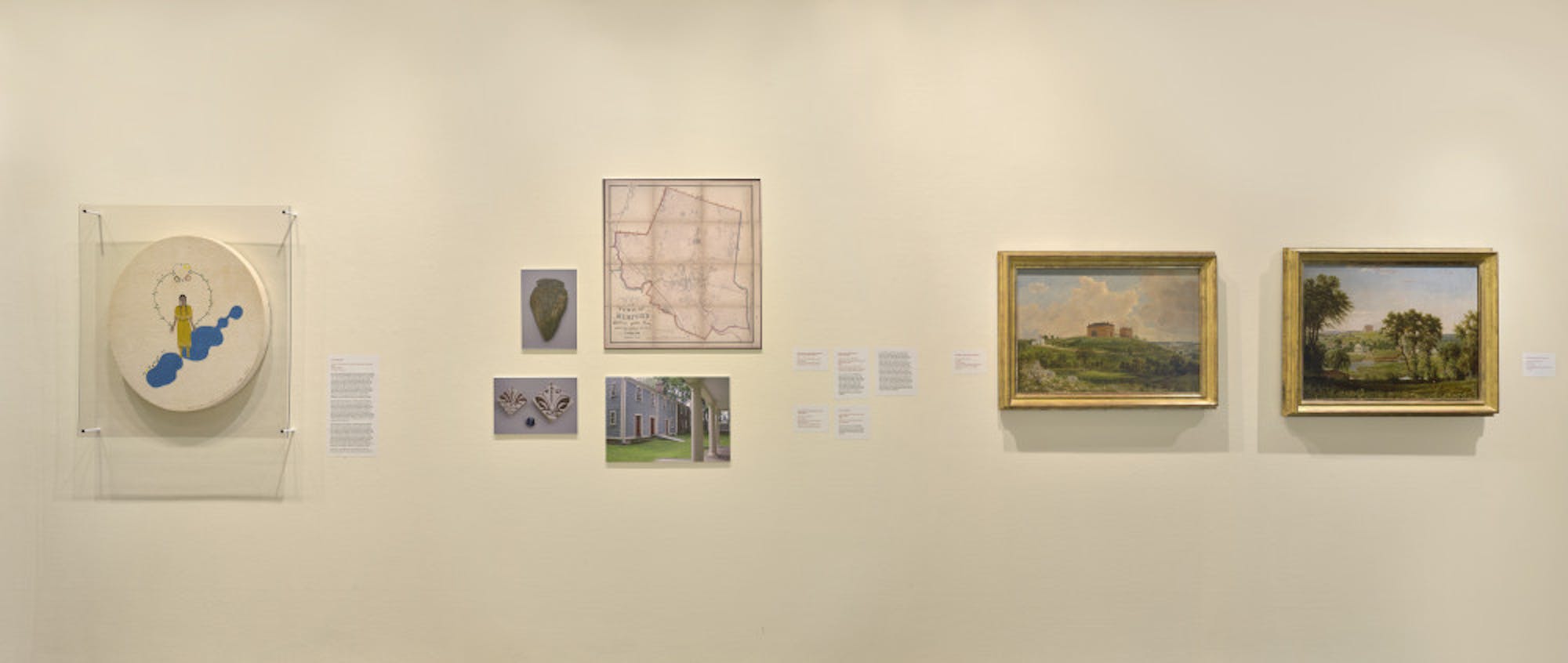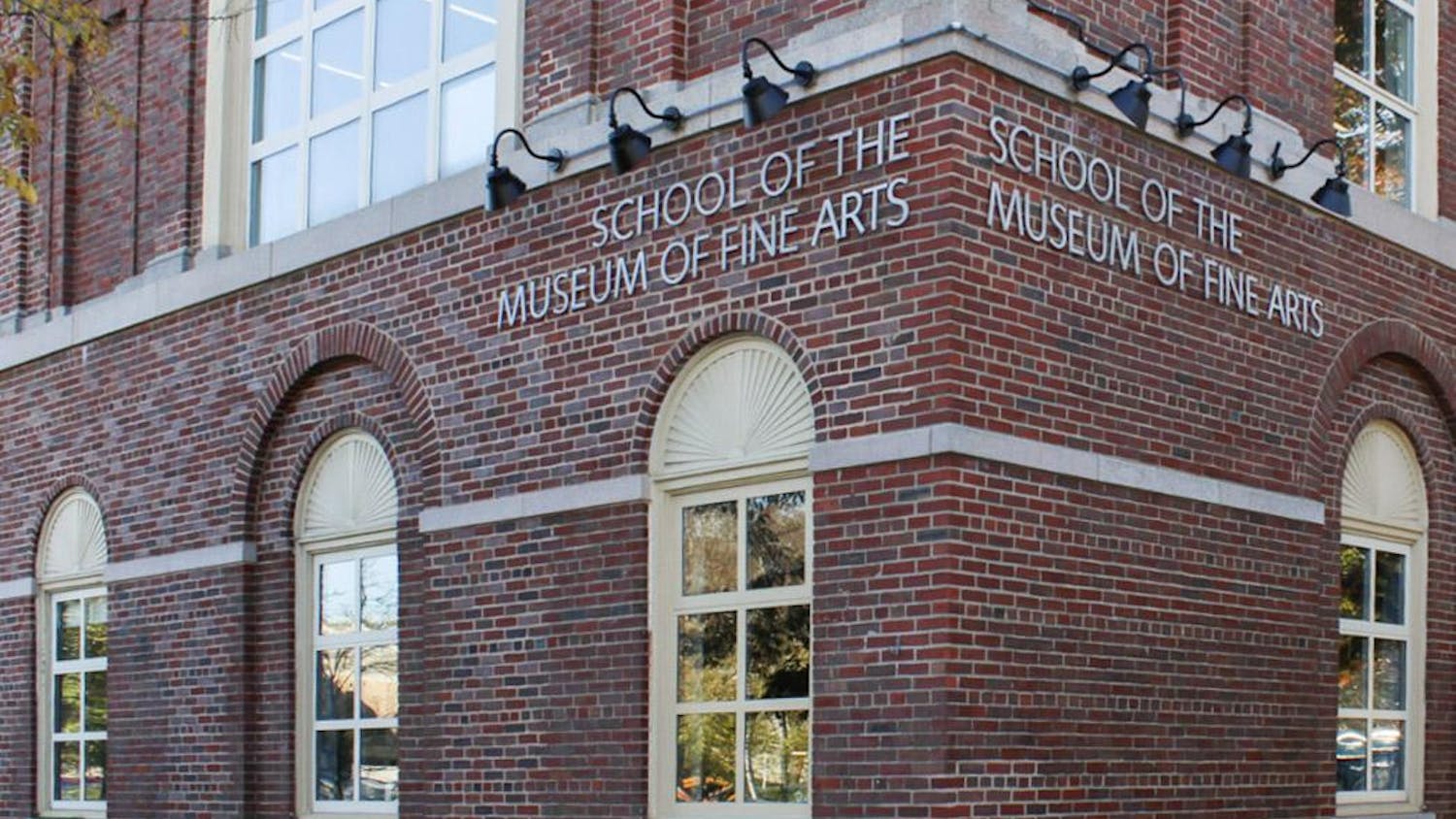How do institutions like Tufts come to be?
Tufts University Art Galleries’ exhibit “Unsettling the Archive: Exploring Tufts' Relationship with Land'' conveys how Tufts’ creation and ongoing expansion have impacted the environments and communities within and around its campuses.
Prior to the exhibit’s conception, Tufts University Art Galleries had been working on formulating a land acknowledgment to acknowledge that the gallery resides on the ancestral homelands of the Massachusett people and within the territories of the Nipmuc and Wamponoag tribes. However, Natalie Gearin (LA’21), former fellow of Tufts University Art Galleries, noted that both she and the gallery wished to explore the topic of land acknowledgment more extensively.
“When you acknowledge that Tufts is on Indigenous land, it brings up a lot of questions about the history of that land. ... Who did the land belong to? How has the landscape evolved over time? How has Tufts intervened into it?” Gearin said.
This exhibit involves a dialogue between Tufts’ archives and contemporary perspectives, an idea that Gearin developed through having conversations with people who were also involved in discussions about land acknowledgment. To find pieces that explored Tufts’ history, Gearin worked with Pam Hopkins, Public Services and Outreach Archivist for the Tufts Digital Collections and Archives.
Hopkins outlined the process of researching through such a vast collection of archives.
“I cast a wide net to bundle as many different resources, and [to] provide context for those resources, as I can to really empower the researcher to sit down and start going through [the archives] ... and it becomes this iterative, building upon, process,” Hopkins said.
Dan Santamaria, director of Digital Collections and Archives, explained the capacity that Tufts’ archives has for exploring how the university came to be.
“The university archives are … a very rich resource for people who want to understand Tufts' past. There’s a ton of interest … in the land that Tufts was built on, how Tufts came to own that land, and building from there, how the landscape changed and how the university altered the landscape, and there’s just a ton of great resources,” Santamaria said.
Throughout the exhibit, archival research is juxtaposed with artwork from various mediums, as a means of almost carving out a new archive.
“When I was thinking about intervening in an archive, I was thinking about how can this show create a new archive, where we have videos, performances, there's photographs, there's paintings, there's a mural on a building. This exhibition, in and of itself, can kind of intervene within the existing archive … it can challenge what we think an archive can be,” Gearin said.
The pieces included in the exhibit not only traverse mediums, but also time, starting with an advertisement posting from 1856 meant to “[commence] a village” around Tufts. Next to this advertisement is a portrait of Sachem of Mistick, a female Massachusett tribal leader from the late 16th and early 17th centuries, created by artist Lilly E. Manycolors. Further down the wall are artifacts and images from Royall House, an estate near Tufts’ campus on which more than 60 people were enslaved from 1739 to 1779.
There are also works from more recent history. Near the end of the exhibit is imagery depicting the expansion of the New England Medical Center, of which Tufts was a constituent. This expansion began in 1970, and over 15 years, NEMC acquired numerous buildings in the Chinatown and South Cove areas, a move that many Boston Chinatown residents were ardently opposed to.
Gearin explained that including imagery of this expansion was meant to highlight that the impact the university has on the surrounding landscape is ongoing.
“I wanted to make sure that [the exhibit] wasn't grounded in the past and, in framing this idea, you could think of Tufts’ presence on the land as something that's constantly changing, and really, it's expanding,” Gearin said.
The exhibit will also soon include projects from undergraduate students in Ninian Stein’s environmental capstone course.
According to Stein, who is a lecturer in environmental studies and anthropology, the capstone projects are intended to think about the concept of institutional change — how people influence and communicate, and how people change institutions from within and from outside.
Communication is a key area of Stein’s research and teaching. Each year, she brings students from her “Environment, Communication, and Culture” class to the galleries, so that they may explore art as a medium of communication for difficult topics.
Stein described the power of artwork to raise awareness around certain issues.
“I think art is a very potent way to communicate around hard topics … and is a wonderful way to think through different ways that we can receive and communicate messages,” Stein said.
One component of the exhibit is found outside the gallery. This is ‘Wapka,’ a mural that was created by Erin Genia, an artist and lecturer in the sculpture and performance department at the SMFA.
Bright and beautiful, ‘Wapka’ is an image of the Mystic River overlaid with images of the Anpa O Wicahnpi — Morningstar — which is Dakota imagery. Genia is a Dakota person, a member of the Sisseton-Wahpeton Oyate/Odawa, and she includes the Morningstar symbol in many of her pieces. Genia used this symbol within ‘Wapka’ to present an Indigenous perspective on the river. This mural was commissioned by Abigail Satinsky, an art curator at the SMFA.
The Mystic River has close ties to Tufts’ history. According to Hopkins, Charles Tufts was a descendant of Peter Tufts, who made money in the brick trade, an industry that took clay from the river, and owned extensive farmland in the area.
Genia hopes that ‘Wapka’ and the other pieces included in the exhibit will inspire people to understand more about various Indigenous philosophies and think more critically about the history of different lands.
“I just wanted to share that Native peoples' philosophies are really important,” Genia said. “I think people need to understand a lot more about Native people … and also the history of places. The history that [children] are taught about this place is a whitewashed history that doesn't adequately give the facts.”
Gearin noted that she wants visitors to understand that the process of forming an institution like Tufts is not fluid, and instead leaves a complex and lasting impact on the landscape.
“I guess the thesis of the exhibition is that Tufts and its campuses are not this organic entity that just appeared. [Tufts] hasn't just naturally coalesced over time,” Gearin said. “I'd also really like to people to come away with the idea that the idea of settlement, the idea of presence and of expansion on the landscape, is ongoing, it can take many forms and [it] impacts all different kinds of people in multiple ways.”






